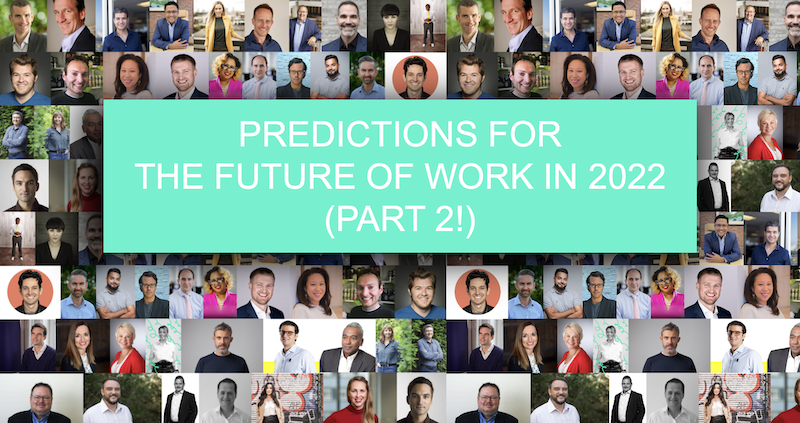- Explore part 2 of our industry expert predictions on the future of work in 2022.
- The pandemic has shifted the way the working world operates enormously. Entering 2022, which of these adjustments will remain trends?
- We’ve collected predictions from a range of different experts, including Nasuni’s Russ Kennedy, Tiger Recruitment’s David Morel and Loom’s Joe Thomas.
Looking ahead to what this new year will bring, TechRound has collected industry expert predictions on the future of work in 2022.
Explore part 2 of our impressive panel, offering up their insights into what the future of the working world could look like…
Explore part 1 of predictions for the future of work in 2022 here.
Our Panel of Experts:
- James Winebrenner – CEO at Elisity
- Russ Kennedy – Chief Product Officer at Nasuni
- Rafael Sweary – President and Co-Founder at WalkMe
- Simon Taylor – CEO and Co-founder at HYCU
- Sammy Courtright – Co-Founder and Chief Brand Officer of Ten Spot
- Ben Legg – CEO & Co-Founder at The Portfolio Collective
- Dean Guida – Founder of Slingshot & CEO of Infragistics
- Rob Holland – CEO of Feedback Loop
- Anna Zarudzka – Co-CEO of Boldare
- Kris Rudeegraap – CEO of Sendoso
- James Rice – Head of SEO at Picked
- Connie Steele – Co-Founder of Flywheel Associates
- Tom Cuthell – Senior Director of London Tech Week
- Markita Jack – Head of Diversity, Equity and Inclusion at Iterable
- David Morel – Founder and CEO, Tiger Recruitment
- Jeff Norton – Author of MetaWars: Fight For the Future
- Alok Alstrom – Founder of the Future of Work Institute
- Simen Teigre – Founder and CEO at Neat
- Joe Thomas – Co-Founder and CEO at Loom
- Chinor Lee – Global Head of Culture, Belonging, Inclusion & Diversity at iCIMS
- Karen Meager and John McLachlan – Organisational Psychologists and Co-founders of Monkey Puzzle Training and Consultancy
- Christy Kulasingam – Management consultant and Founder of Radbourne Consulting and In.Side.Edge
- Fadl Al-Tarzi – CEO of Nexford University
- Richard Prime – Co-CEO and Founder of Sonovate
- Clare McKeeve – Group CEO of Talenthouse
- Helena Nimmo – CIO at Endava
- Victoria Usher – CEO at GingerMay
- Rodolphe Ardant – CEO and Co-Founder at Spendesk
- Marko Gargenta – CEO of PlusPlus
- Natalie Smith – Associate Principal, Workplace Strategy, Perkins&Will London
- Gabriela Hersham – Co-Founder & CEO of Huckletree
- Chris Whife – Managing Director Global at Demand Science
- Miles Everson – CEO of MBO Partners
- Bjorn Reynolds – CEO of Safeguard Global
- Mitch Chailland – President at Canal HR
For any questions, comments or features, please contact us directly.

James Winebrenner, CEO at Elisity

“The impact of the COVID-19 pandemic has accelerated the need to secure a permanently distributed and hybrid workforce.”
“As we look to the future, organisations are realising that while trendy approaches like SASE are useful for protecting remote workplaces, they cannot account for east west traffic across managed or unmanaged devices. The goal now is to integrate multiple sources of identity across systems, legacy and new, and to assimilate them into a unified policy whether on-prem or in the cloud. In 2022 and beyond, we will see more and more enterprises move beyond cloud-only SASE models and point products to holistic solutions that protect data, apps and assets wherever they are being used.”
Russ Kennedy, Chief Product Officer at Nasuni

Companies will modernise, moving workloads to the cloud: “A surprise in 2021 was companies’ reluctance to agree on strategies for moving workloads and data to the cloud. Despite teams being forced to work from home, many in the industry had predicted that IT teams would send workloads and data to the cloud more quickly.”
“Cloud storage providers are breaking through ‘traditional’ thinking on data management and organisations are modernising with strategies like hybrid approaches – where certain critical assets stay on-premise while other assets/workloads move to the cloud.”
“Perversely, increased supply chain disruption is likely to accelerate the adoption of cloud and managed services – companies facing longer lead times for their on-premise storage hardware orders are having to adapt to cloud service and managed services anyway.”
IT roles changing as more enterprises move their infrastructure to the cloud: “Enterprises will need to be ‘cloud savvy’ and grasp how to leverage cloud to better deliver IT services to their end users.”
“Organisations will become much more driven by virtual teams and how teams operate collectively. The pandemic has effectively forced organisations to become more virtual and collaborative. The industry will need to grow talent and educate their workforces and especially, young people entering the workforce, on the skills, tools and knowledge needed to be team-oriented and productive in this connected technology driven world.”
“A key skills trend is data engineering, ensuring that data is in the proper location and format to be useful from an AI, machine learning and other analytical viewpoints. So, the data scientist skill set will continue to be prominent and important in organisations, regardless of the industry sector.”
For any questions, comments or features, please contact us directly.

Rafael Sweary, President and Co-Founder at WalkMe

“More and more software will be marketed to organisations of all sizes, creating a technology overload on employees. Given the large number of startups that have been able to raise money over the past 2+ years, we will see more offerings available for organisations to add to their tech stacks, resulting in a, ‘There’s a system for every problem,’ kind of problem. And as we saw during the pandemic, organisations bought. A lot.”
“In 2022, we will see organisations analysing and measuring those investments they made to their technology stack. What’s working? What’s not? It’s time to reap the benefits. It’s no longer going to be ok to have shelfware. For years, organisations have been running analytics on their websites but not doing the same for their other tech platforms, software, and apps.”
“The shift to the need, and mandate, for analytics on all tech investments is coming, if not already here. No one can justify spending millions without proving its worth through strong analytics. As part of the ‘measure what you got’ stage, organisations will use analytics and data to see how well employees are using the technology platforms provided to them.”
“Organisations will be able to see where employees are being held up, if their tech investments are proving productive, and where improvements can be made. As such, the user experience will become paramount for true digital adoption that will lead to greater return on organisations’ technology investments. And while technology is indeed digital, the user is human. Those organisations that bridge the gap between the digital and the user will achieve greater ROI.”
Simon Taylor, CEO and Co-founder at HYCU
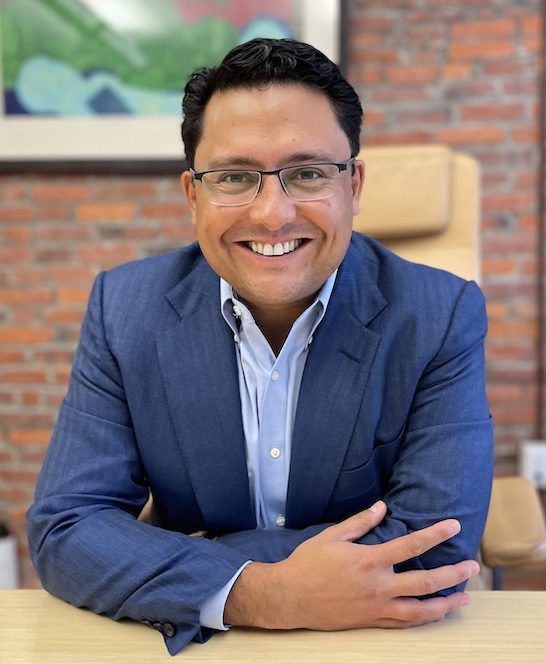
“The entire COVID and pandemic experience has become in some ways a giant social experiment. We were able to brute force test many things. For example, how flexible work really works, how efficient is it for businesses to be in a flexible working model.”
“Because of this, I don’t think any of this is going away anytime soon. I see the future of work as supporting an increasingly flexible workforce inside of an increasingly flexible workspace. What I mean by that is that I think people will now feel almost every employer will have a heightened sense of comfort. Comfort with hiring people in relatively remote areas. At the same time, I think there is going to be a working expectation that regular office visits will need to take place, again for that important face-to-face time and collaboration time.”
“I think the way that that paradigm shift plays itself out, even in terms of real estate, is actually that people are going to want more office space not less. I think people are going to want more social activities inside of an office space and potentially outdoor areas around an office space. People are going to want the flexibility to be in a private area as well as a collaborative space, or even in a space that may reflect some of the things that they enjoyed at home, sitting on a couch, open area, etc. A place where you can go to relax in between finishing a presentation. I believe we will continue to see increased flexibility in both the workplace as well as increased flexibility in the way that we work.”
For any questions, comments or features, please contact us directly.

Sammy Courtright, Co-Founder and Chief Brand Officer of Ten Spot

Gen Z will get louder and shape the future of work: “Gen Z is not only laser-focused on using technology to solve problems – 63% think that using an employee engagement and productivity platform could help their company improve the company’s culture, employee communications, inclusivity, and training and development efforts – but 86% have already experienced discriminatory issues or abusive behaviour in the workplace. Gen Z will likely have a significant impact on today’s workplace – from how we use technology to addressing issues regarding workplace discrimination and diversity, equity, and inclusion to how companies deal with the most pressing social and political issues.”
Companies will double down on training – especially for managers: “Even before the pandemic, a report from 2018 indicated that 59% of managers hadn’t ever had any training on how to manage people. Because of the work transition everyone has been through, this number might actually be even higher now. Managers desperately need training on how to be managers, and they need training on how to be managers remotely. Training managers to effectively manage remote teams is a huge issue because managers are struggling right now, and when managers struggle, their teams and direct reports struggle as well.”
Companies will reset on core values & bigger issues: “The new era of working from home combined with the wave of resignations the workforce is experiencing has companies questioning if their core values represent their existing employees, and will ramp up for a big reset. A Ten Spot survey indicated that many companies supported or took action in sociopolitical issues in 2021 and that how a company responds to social, political, and humanitarian issues impacts company culture. Overall, 56% of respondents say they would be more engaged and productive at work if their company was actively involved in addressing today’s critical social issues.”
Ben Legg, CEO & Co-Founder at The Portfolio Collective

“The Great Resignation will continue for the next decade, with more and more people opting out of traditional full-time employment to launch flexible portfolio careers. Based on this, employers will struggle to fill gaps and will accelerate getting work done by hiring consultants, freelancers, interims and part-timers. This will dramatically shrink the number of people in full time employment, increase the number of portfolio professionals, while boosting worker productivity and satisfaction. In parallel, the amount of cross-border work will grow exponentially, as portfolio is over 90% remote and knows no boundaries.”
For any questions, comments or features, please contact us directly.

Dean Guida, Founder of Slingshot & CEO of Infragistics
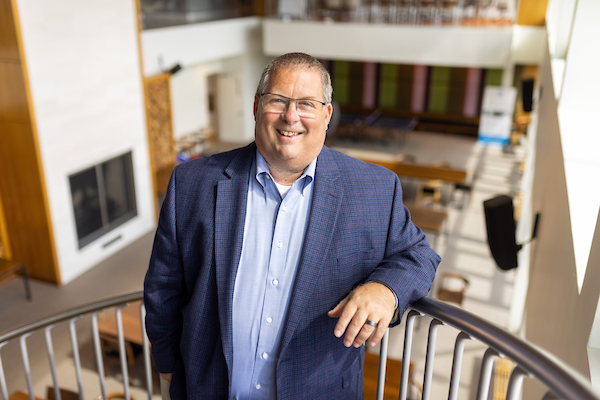
“Companies will streamline the digital workplaces they cobbled together on the fly. When companies first made the switch to remote work, they scrambled to introduce an abundance of new tools for employees to work at home. Now, nearly two years later, companies have more digital workplace tools than they know what to do with.”
“In 2022, companies will streamline their digital workplaces, reevaluating each and every tool to create a powerful digital workplace tech stack. Companies now know which tools work best – and which don’t work at all – to engage employees and power collaboration and productivity.”
“As part of this process, we’ll also see companies gravitate to digital workplace tools that combine multiple capabilities–for instance, data dashboards, chat, content and task management–in one place. In this new digital workplace, the less time people spend app-switching, the more time they’ll spend being productive.”
Rob Holland, CEO of Feedback Loop
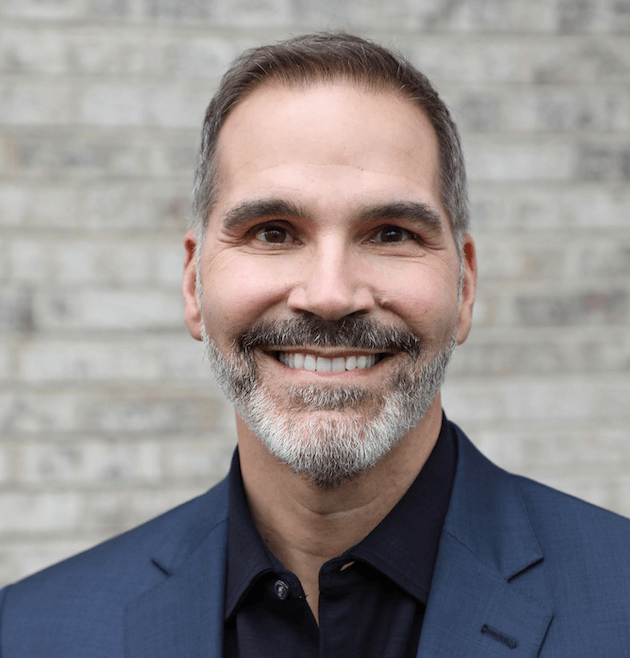
“We’ll see businesses navigating workplace protocols on their own to compensate for the lack of widespread vaccine mandates. As these businesses put policies in place, there will continue to be substantial pushback from staff. According to consumer insights we gathered with benefits management company Benefitfocus, we expect to see nearly half of employees refusing to comply with companywide vaccine mandates – 20% more than employers estimated.”
“In 2022, more company leaders will talk directly with employees to create protocols that address everyone’s concerns, instead of making blanket assumptions. This will include new policies, such as allowing unvaccinated employees to work from home or requiring frequent testing before entering the office.”
For any questions, comments or features, please contact us directly.

Anna Zarudzka, Co-CEO of Boldare

“I, in general, have a pretty positive view of what the future of work will look like. We have, as a planet, more serious reasons not to be optimistic, but we as humans can handle this change in overall approach. Every watershed moment in the market and development economics comes with a price, and we pay it with every major change.”
“With the hundreds of jobs and opportunities that disappear, comes a slew of others. Not only those that require tremendous skills to process the change, but also those that will be a return to what was already there. The turn away from globalisation builds more space for small, artisanal businesses. The return to creativity opens up many places that technocratic thinking has closed us off to. The need for soft skill development allows for a return to humanism and activities that have lost weight in recent years, non-governmental institutions, independent media, sustainable agriculture, local services – these are the things that will be places for more people. All of these places and activities are hard to automate. It’s the people that matter.”
“A key decision facing the leaders of any company is how much information to share internally. What are you going to tell your workforce about company strategy, performance, financial results, etc. On a spectrum between the absolute minimum and everything, the answer usually lies somewhere in the middle.”
“But there is a growing school of business thought that says real business efficiency, from top to bottom, relies on sharing everything: a policy of radical transparency. This can present as a challenge to both employers and employees, but when the pandemic arrived, our radical transparency was a key factor in our seamless shift to 100% remote working, without a drop in efficiency or performance.”
Kris Rudeegraap, CEO of Sendoso

“EQ and empathy will be the primary skills that businesses prioritise. For teams to thrive, these soft skills will be the highest gauge of top-performing teams, particularly as technology will automate many “hard skills” in the workplace, such as data analysis, programming, and editing.”
“Business relationships will find ways to automate highly-personalised interactions. Companies will invest in AI and deep analytics to provide recommendations on how to best foster these connections – whether it’s through eGifts, physical gifts or digital experiences.”
“Companies will use tools and techniques more acutely to understand and even diagnose employee disengagement/disgruntlement. Whether it’s from analysing employee language/behaviour to setting up real-time feedback loops, organisations will look to incorporate ways to better support and inspire employees to improve retention and performance.”
For any questions, comments or features, please contact us directly.

James Rice, Head of SEO at Picked

“Traditional CV’s and resumes are not as valuable as they once were. Employers are turning to more insightful and data-driven ways to shortlist their workforce of the future.”
“We’ve seen a trend towards employers adopting technology and AI to provide more data on candidates, allowing them to improve the quality of their hires and removing unconscious bias from their selection process.”
“Soft skills tests, aptitude tests and job knowledge assessments for example provide a technology-driven approach to shortlisting. Tests are sent to candidates during the early pre-screening stages of a recruitment process and employers are provided with test scores back. These test scores highlight the strengths and weaknesses of each candidate which automatically rank top performers based on the role requirements.”
“Our prediction: more AI and candidate testing.”
Connie Steele, Co-Founder of Flywheel Associates

“Throughout the 21st century, we’ve seen a gradual shift in the U.S. workforce. The world of work has been shifting from siloed, narrow, sequential, linear and rigid to collaborative, broad, agile, and fluid; a cultural shift from conformity to individuality. This shift picked up speed in 2020 and 2021, as the global pandemic forced organisational and lifestyle changes on us — and it’s never been more clear that this cultural shift necessitates organisational changes.”
“We can see that too many people are unhappy. We can see that businesses of all sizes are struggling to adapt in a way that drives both business success and employee satisfaction. We can see millions of people quitting every month. So, in 2022, we’re going to see a small number of organisations emerging as new leaders by attracting these disillusioned workers and we’re going to see these disillusioned workers starting their own businesses in record numbers.”
For any questions, comments or features, please contact us directly.

Tom Cuthell, Senior Director of London Tech Week

“The last two years have changed everything. For businesses, for leaders and for employees. Unplanned reinvention of the way we work dominated industries as organisations grappled with government guidelines and reacted to constantly changing circumstances. 2022 is the now the year for businesses to actively reinvent processes, for leaders to make intentional decisions and for employees to speak their minds.”
“Whilst the future remains uncertain, innovation and technology continue to lead instrumental change in the nature of work and the follow trends will be evident at Future of Work Summit 2022, which runs in June as part of London Tech Week.”
“The skills and talent of the future. How can business leaders identify the unique investments in future-forward skills for current and prospective employees? In the race to survive the talent shortage, what role will the gig economy and freelancers play?”
“Unleashing the power for all. Creating a desirable culture is critical to business success when looking to attract and retain new talent whilst remaining competitive. Cultivating an inclusive environment to embrace all colleagues and empower diverse perspectives to drive change will be essential. How do we now ensure a community feeling doesn’t just give us meaning but results?”
“The power of technology in a humanised workforce. With advances in technology supporting the emergence of the metaverse, accelerated by hybrid work, how is the relationship between the workforce and technology changing? With this comes challenges concerning equality and accessibility.”
“Reimagining a sustainable future of work. Demand for companies to act sustainably will only grow in 2022; mindsets need to change, and skillsets must advance in order to commit to action that transforms. A new consciousness about social and economic impact has arisen and will continue to grow; individuals need to be connected behind a purpose they are proud of so that ESG efforts don’t fall short.”
“Integration of new technology into the workplace has led organisations to reimagine and re-architect their business strategies to allow for this new virtual world of work, demanding time and energy from technical decision-makers. The Future of Work Summit 2021 provides a unique opportunity to discuss developing attitudes, gain new perspectives and extract tangible takeaways. The way we work is changing, and it has never been more important to understand and prepare for the future.”
Markita Jack, Head of Diversity, Equity and Inclusion at Iterable

“Everyone’s talking about this ‘Great Resignation’ but I’d call it a ‘Great Liberation.’ We are seeing an incredibly empowering moment for the history of work, and for workers. Those that are quitting are sending a message to businesses and leaders that they deserve and expect better. Better pay, treatment, and employers.”
“In 2022, companies must embrace change if they want to retain employees, and my hope is that it pushes them to establish company norms that prioritise equity and stop handing out free passes to folks who don’t. There are a lot of places people can work that don’t value justice, equity, and inclusion – so we’ll likely see more people shift into places that feel increasingly comfortable to them.”
“Additionally in the next year, candidates will be attracted to organisations offering more creative benefits options that include mental health and well being as well as expanded learning and development. Candidates will want to work for a company that is invested in them in return. Part of this investment includes transparency, especially around pay equity and equitable practices. It is this care and transparency that will develop the authentic and inclusive work environments where all employees can thrive.”
For any questions, comments or features, please contact us directly.

David Morel, Founder and CEO, Tiger Recruitment

+44 (0) 7810631642
[email protected]
www.jasonalden.com
Hybrid future: “While many businesses are embracing a hybrid future, certain companies in the financial sector are digging in their heels. Their preference is for in-person working and a return to the office (and pre-pandemic ways). However, hybrid is likely to win out. In today’s candidate-short market, businesses will soon realise that attracting and retaining top talent means satisfying employee demands for flexible working. In 2022, expect the conversation to turn to when and how work gets done rather than where.”
Borderless workforce: “With the rise of remote working and the increase of digital nomad visas, the workforce of 2022 will be more international and dispersed than ever. Pre-pandemic this might have seemed implausible but we’ve seen that, with the right technology and communications, remote working can be successful for many roles. At a time when quality talent is at a premium, smart employers will expand their talent pool by recruiting and employing staff beyond their borders. The question will be how remote they’re willing to go. Do workers have to be in the same time zone, or could having people in different time zones be a business advantage?”
Wellbeing culture: “The pandemic has taken its toll on employee mental health. So too has the ‘Great Resignation’; as people quit their jobs in record numbers, the workers left behind are having to pick up the slack and take on more responsibilities. Suffice to say, employee burnout is a very real issue that threatens the happiness and productivity of the workforce. Consequently, in 2022 we’ll see smart businesses take a more strategic approach to workplace mental health as they look to balance profit with worker wellbeing.”
Jeff Norton, Author of MetaWars: Fight For the Future
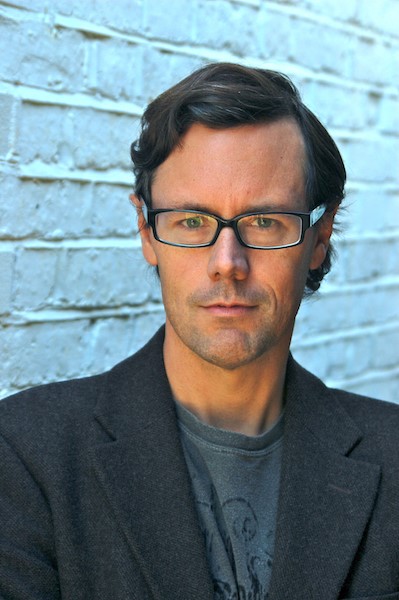
“Today’s connectivity tools are necessary but not sufficient for meaningful collaboration and unbridled creativity. People still crave togetherness, and human beings spark new ideas from being in close proximity. One of the unfortunate causalities of the pandemic is serendipity. You just don’t bump into colleagues in an unscheduled, happenstance way when working from home. But I don’t think we’re ever going back into the office five days a week (or seven if you’re an investment banker).”
“Much has been hyped about the “metaverse”, but a globally accessible, virtual reality whereby people can connect and collaborate will likely become part of the work mix in 2022 and beyond. There are a few nascent tools vying for this, such as Spatial or Horizon Workrooms, but they rely on headsets which are heavy and often nausea-inducing for some. But the tech is getting better and lighter, and with it, VR collaboration will start to become mainstream. We’re may only be in the early days of the metaverse, but video calls were once considered science fiction and the future is coming fast.”
For any questions, comments or features, please contact us directly.

Alok Alstrom, Founder of the Future of Work Institute

“Heading into 2022 I think we can expect that people will continue to require flexibility with their work. Covid has changed the way we perceive what ‘work’ is. It’s no longer defined by the office we go to. Before the pandemic, people would say ‘I’m going to work’, but what they really meant was they were going to the office.”
“When you have been sitting in an office for eight or nine hours, under dry air and poor lighting, you can go home exhausted and feel like you have done a full day of work. In reality, though, you might not have actually achieved anything.”
“During the first stages of the Covid pandemic it became more apparent that working was not about going to a physical place and people started to reflect on what they were accomplishing.”
“Purpose-driven work has therefore increased in importance, as has the need for a greater balance between work and home.”
“Juggling things such as childcare and family during the pandemic has refocused many people on what they want ‘work’ to be.”
“I think this year we will continue to see a great emphasis on flexibility in all areas, whether that means working from home or a shared office space, doing work in hours that fits around your needs, or changing your line of work altogether to achieve a more flexible way of living.”
Simen Teigre, Founder and CEO at Neat

“The new meeting movement is decentralising where we work. It is no longer a necessity to conduct all work and meetings in the office, as we have seen a shift to more meetings taking place virtually. However, the office is still important as a space for collaboration. The disruption of the Pandemic has accelerated a positive shift in how office spaces are viewed, with many evolving to accommodate for more open-plan working. These spaces are being developed to create environments which encourage groups to safely congregate, work collaboratively and inspire creativity.”
“As people now have the opportunity to live further away from work to escape the ever increasing prices of living near or within a city, the introduction of new technology that seamlessly connects remote and office workers is crucial to ensuring that every meeting is an equitable experience for all. Technology that can subtly assist with things like equally displaying each office member on a person’s desktop screen, or being able to set boundaries to minimise background disruptions in an open-plan office or home environment, makes for a seamless and stress-free meeting experience for all participants.”
For any questions, comments or features, please contact us directly.

Joe Thomas, Co-Founder and CEO at Loom

“Hybrid work is here to stay. Just like the in-person office went through a radical redesign in the past decade, we’ll need to iterate, optimise, and recalibrate the way we run our hybrid workspaces in 2022.”
“Last year accelerated the development and adoption of technologies that make hybrid work not just possible but also effective. A new channel that’s emerged is async video – a flexible, easy way to scale knowledge-sharing, onboard new employees, provide feedback, and more. By creating a visual and audible experience via recorded video messaging, businesses can create team familiarity and affinity across global teams.”
“Building a culture utilising async communication can unlock new ways to maintain and nurture company cohesion in a distributed team. In addition to productivity and efficiency gains, sharable async video provides a new medium for social connection and personal expression. On our team, we’ve seen the team organically share garden tours, parody Twitter demos, and original songs this way. This can help team members feel part of a unified culture, regardless of their location. It’s all about designing light-lift ways to increase connection and mutual affinity.”
“It’s important to test new work policies and technologies that drive the future of work – something tech-savvy business leaders have already started exploring. Economist Impact and Google Workspace predicted that experimentation with new models of work will have a lasting impact. By leaning into this experimental approach, businesses can conduct their own modern work experiments – whether that’s trialling existing technology like VR or async video, or designing their own initiatives and tech integrations. In 2022, experimentation will be a powerful way to adapt to hybrid working environments – from improving collaboration and productivity to redefining the norms of modern work.”
More from Guides
- 10 Tips to Go Viral in the Pet Industry
- Top Alternatives To Shopify
- Crypto Clash: Gate.io Vs. OKX
- 10 Things UK SMEs Should Know About Managed IT Support
- How to Open a Business Bank Account In the UAE
- Crypto Clash: MEXC Vs. OKX
- Why Installing Local Travel Apps Enhances the U.S. Road Trip Experience
- Running a Family Business in Bristol? Here’s Your Digital Checklist
Chinor Lee, Global Head of Culture, Belonging, Inclusion & Diversity at iCIMS

“2022 will bring us more of what 2021 brought us: distributed workforces, remote-first cultures and empowered employees. During the onset of the pandemic, many organisations had to quickly and drastically re-think “business as usual.” Initially, people worked from home and stayed put. Then, in 2021, some workers began to travel more and for longer periods of time—there was no need to rush back to “home base” as long as they had a strong WiFi signal.”
“Now that a large number of employees have had a taste of remote work, they may not be so eager to give it up. They’ve grown accustomed to the autonomy and the ability to structure their days around their unique needs. Beyond that, the support that was once in place so employees could spend more than eight hours at headquarters has been drastically altered as well. With people living where they work and working where they live, implementing a remote-first culture will help people disconnect and support them in their self-care, so they don’t burn themselves out.”
“With the pause that COVID caused, people are entering 2022 with a critical lens asking, “does this still serve me?”. Since so many companies have embraced this “work from wherever” philosophy, employees are taking them up on it. They are applying for opportunities they wouldn’t have in the past because they’re no longer beholden to a specific geographic location. Employees are also being more mindful about the values companies are promoting and seeing if they match their own. Beyond that, they are also no longer shy about holding companies accountable when what’s said publicly is inconsistent with what they’re experiencing internally.”
For any questions, comments or features, please contact us directly.

Karen Meager and John McLachlan, Organisational Psychologists and Co-founders of Monkey Puzzle Training and Consultancy

“In 2021 employee wellbeing once and for all moved from being a ‘nice to have’ to becoming a top priority. But in 2022, for it to be taken seriously and become embedded in organisational culture, leaders need to lead on it by example and not view it as a distraction from productive activity. The challenge for many organisations has been how to communicate wellbeing in a way that people can connect with. At a time where there are record levels of employees with mental health challenges, the actual take up of wellbeing services is still too low at around 23%. Organisations need to help their people overcome the stigma that some still associate with asking for help in 2022.”
“We are still seeing a world and our working lives in a state of uncertainty, with new variants of Covid only adding to the confusion. 2022 will be a settling down year where organisations will be best placed to focus on what they can control – which is their day to day business and any issues that arise. There’s nothing to be gained by worrying too much about what they don’t yet know or might not happen. A lot of leaders may want to push ahead with their plans, but they need the resolve to remember that their people may not yet be in the same place. Many are still tired and re-evaluating what they want from their lives first, and careers second.”
“Many forecasts suggest there will be a lot of turnover in 2022. Some predict a ‘great resignation’ with up to 40% of the global workforce seeking to re-evaluate their career options. Leaders need to focus on the things they need to do to take their people with them. Many employees are realising they can now work for anyone and far more flexibly than before the pandemic. So, concentrate on creating the kind of workplace – or way of working – that will retain. However, when people do leave, construct ‘good exits’ as people may be open to returning if their move doesn’t work out as they planned. In 2022, clarity will not only be your friend, it’ll help your people decide if they want to stay – or take up opportunities elsewhere.”
Christy Kulasingam, Management consultant and Founder of Radbourne Consulting and In.Side.Edge

“A key message for the future of work in 2022 is “don’t take your talent for granted.” The pandemic-induced lockdowns and health concerns made people reassess their life and work priorities. Many have chosen to move on. To attract, motivate, and retain the best, leaders are going to have to be creative in engagement.”
“But this needs to go beyond rote, performative signals. Make substantive improvements to people’s lived experiences. I predict we will see more of this in 2022, but still there will be more work to do. From tick-boxing exercises around Diversity, Equity, and Inclusion to greenwashing of corporate brands, I saw plenty of performative activities in 2021. Concerned about mental wellbeing of staff (or more directly, the loss of productivity and resignations of top performers)? Add a free subscription to a mindfulness app to the employee benefits platform. Let them self-soothe by spending more time with another screen that probably significantly contributes to their stress in the first place.”
“Instead, businesses should, and hopefully will, demonstrate that they care by embracing new ways to engage their team. Technological advances, pandemic-led disruption and the resulting acceleration of changes to working practices are all providing innovative opportunities for growth. Learning stagnation will not be an option in 2022.”
“Let that up-and-coming star get mentored by a star from the outside. Allow that first-time team leader to get coached on taking on leadership by a young captain from elite sport. Allow — even encourage — that innovative high performer to explore their side hustle. Curating and crafting highly-personalised talent offerings will be key to thriving in 2022. They build loyalty, encourage ingenuity, show off people offerings, and amplify the employer brand.”
For any questions, comments or features, please contact us directly.

Fadl Al-Tarzi, CEO of Nexford University

“The pandemic has shifted perspectives towards work and sparked the so-called “Great Resignation”. Record numbers of employees are quitting their jobs and employers are struggling to retain staff or tempt them to return to industries that have often treated workers as dispensable.”
“The issue is compounded by a visible and rapidly-growing skills gap globally, which is partially explicable as a side-effect of two decades of rapid digitisation. There is also an ongoing failure of the traditional higher education system to equip enough workers with skills relevant to 21st century jobs – widening the skills gap even further.”
“To combat these challenges, the future of work should see an increased focus on upskilling and reskilling employees, and the promotion of workplace learning culture to ensure employees have the requisite skills to not only succeed at their current jobs but continue to progress their careers.”
“Many large corporates, especially in the United States, are already reinventing their employee learning culture. In September 2021, Amazon announced it would pay college tuition for its 750,000 frontline workers, amounting to $1.2 billion in spending over the coming four years.”
“Bridging the gap between employers and learners is in the interest of both organisations and educational institutions. Employers seeking qualified talent and applicants wanting to become qualified presents the right foundation for much closer collaboration between the two.”
“Yet, many traditional universities do not consider their primary role to prepare learners for their careers, and deep-rooted tradition and even bureaucracy prevalent at many universities can also hinder the creation of closer business relationships. To bridge the gap, organisations should integrate a culture of education in the workplace via seamless collaboration with educators to unite employee and employer educational needs.”
Richard Prime, Co-CEO and Founder of Sonovate

“While in 2020, millions of employees found themselves at the mercy of their employer’s decisions – such as furlough or redundancy – 2021 has seen the power shift firmly back to the employee. The pandemic has created an employees’ market as the global talent shortage increases, with over half of senior business leaders believing that it will be harder to find talent with the right skills in 2022. In fact, our Future World of Work report found that nearly half of workers attribute the pandemic with changing their perspectives on what a future career looks like.’
“So what exactly does this mean for hiring practices? As demand outstrips supply, businesses naturally have to evolve to accommodate and retain their workforce. The world of work is changing to offer a more hybrid, flexible model, with the global health and economic crises shining a light on the possibility of greater work-life balance for employees, everywhere. It’s equally shifted the traditional value chain of salary, location, proximity to home and number of hours to the values of an organisation, benefits, well-being, mental health and of course, flexibility.”
“Organisations need to recognise the change and react accordingly to retain top talent, embracing hybrid work models to gain a competitive advantage and widening the pool of people they recruit from – with those companies unable or unwilling to adapt to flexible working likely to lose out on talented people.”
For any questions, comments or features, please contact us directly.

Clare McKeeve, Group CEO of Talenthouse

“It might be tempting to see some of the pandemic-induced changes in work practices as temporary, but the shift to the creator economy is structural and will accelerate in 2022.”
“Power is moving to individuals. People are moving away from the 9-5 job, instead working across multiple businesses and side hustles. At the same time, the ability to work from home has created a global workforce, one beyond the physical borders of the business. For many, this opened up the possibility to drop the commute and routine work, and turn their passion into their livelihood.”
“The work platforms that mediate between companies and individuals flourished last year and we’ll see continued strong growth into 2022. At Talenthouse, we connect world-renowned brands with talented creatives across a whole range of fields from photography to graphic design and AR. This model allows businesses to pick the best person for each individual creative task. Businesses require global, nuanced, and authentic content and this is best achieved through working with a local, talented and empowered workforce.”
“Remote work has also changed what it means to be a creative. Freed from the constraints of rigid, office-based work doesn’t stop creatives from wanting or needing social interaction, nor should the absence of full-time contracts be an excuse to treat creatives badly. Increasingly, creatives will seek out work platforms that provide a community and sense of belonging, that offer the tools for them to learn and grow, and that treat them fairly. At Talenthouse, we are striving to do all of these things. For example, our recently launched ElloU platform gives creatives access to money management services, helping them to achieve financial freedom alongside professional freedom. And so, while many expect everything to revert to normal post-COVID, creatives have been set free to do what they love.”
Helena Nimmo, CIO at Endava

“In 2022, I expect we’ll see more of the same trends that have occurred since the onset of COVID-19: workers have proven that it is possible to work effectively remotely and employers who continue to provide this flexibility will be better placed to attract and retain talent. It is this flexibility and trust that have been at the core of most remote working policies in the last two years, and companies will need to maintain this freedom for their employees in the future. However, as we can see, this future of work will also need to cater for the diversity in people’s lives, experiences, and needs. This transition into the hybrid model will be different for each employee – and organisation – so businesses shouldn’t take a generic approach to those in drastically different circumstances.”
“We must acknowledge these factors or risk reverting to a ‘one size fits all’ model, which we know won’t work. Different generations and groups will cope better with some ways of working than others. Unfortunately, it is likely to be precisely those that were disadvantaged prior to the pandemic; a great example here is working parents, who usually have other commitments to manage during the day alongside work.”
“We will see businesses turn to technology to provide flexibility and address the true complexities of working from anywhere in line with these new employee expectations and requirements. Leaders must also look beyond technology and think more deeply about those using it and how it can be used to facilitate flexible working. Now is the time for businesses to look seriously at their set up and implement digital acceleration as a methodology for whatever the right ‘hybrid working’ policy looks like for them, their employees, and their customers.”
For any questions, comments or features, please contact us directly.

Victoria Usher, CEO at GingerMay

Cross-channel experiences: “To maintain all-important client and customer interactions in 2022, businesses will continue to leverage hybrid marketing strategies. While in-person events are likely to return in the coming year, B2B marketers will use virtual webinars, podcasts, and social media to complement traditional approaches. Engaging audiences across preferred and emerging channels will be critical for growing business reputation.”
Transparency from businesses: “For customers, finding a business that aligns with their values will be as important as a company’s products or services moving forward. Being transparent will therefore give businesses a competitive advantage. By supporting statements, actions, and principles with data, companies can clearly communicate why they are the best fit for their customers.”
Rodolphe Ardant, CEO and Co-Founder at Spendesk
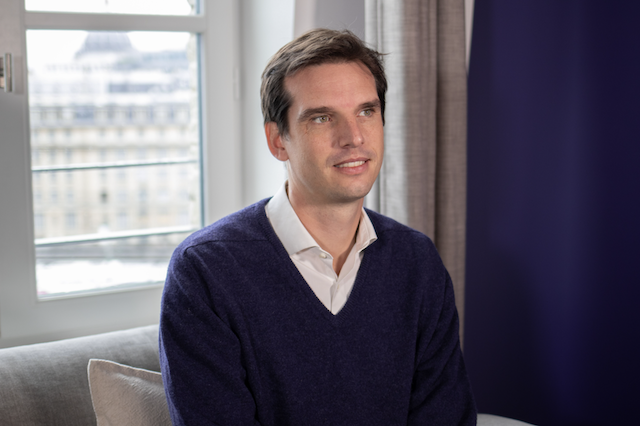
“Employers wanting to prepare for the ‘future of work’ will need to keep the two most important factors for the new generation of workers in mind; flexibility and ownership.”
“Flexibility may seem obvious, but approaching it in the right way is paramount. Employees now have the same expectations of flexibility in their work lives as they do in their private lives, and are looking to combine the two seamlessly. As processes, responsibilities, and teams become decentralised, leaders need to trust employees to do their best work, and establish clear lines of asynchronous communication and processes that work both in and outside of the workplace.”
“Instilling a sense of shared ownership has never been more important. A community of motivated, trusted employees working collectively towards the success of the business, who feel invested in the growth of the company, is what the future should look like. Putting flexible working in the hands of staff, allowing them to work fully in office (where restrictions will allow), at home, or a blended approach will allow them to feel their needs are being met. Removing barriers to success like manual processes and low value tasks will ensure staff effectiveness is maximised, and giving employees co-ownership – with the opportunity to own shares, for example – are sure ways to increase their connection to the company.”
“With many leaders considering how to tackle the ‘great resignation’, instilling a culture that recognises employee wellbeing is crucial, and the surest way to avoid losing key talent. Taking steps to invest in employees, such as giving them access to counselling and mental health services, establishing budgets for non-work, wellbeing purchases, and shared team building experiences will create a sense of belonging to a common cause. Company culture should be a tangible thing – not just a pledge in an employee handbook.”
For any questions, comments or features, please contact us directly.

Marko Gargenta, CEO of PlusPlus
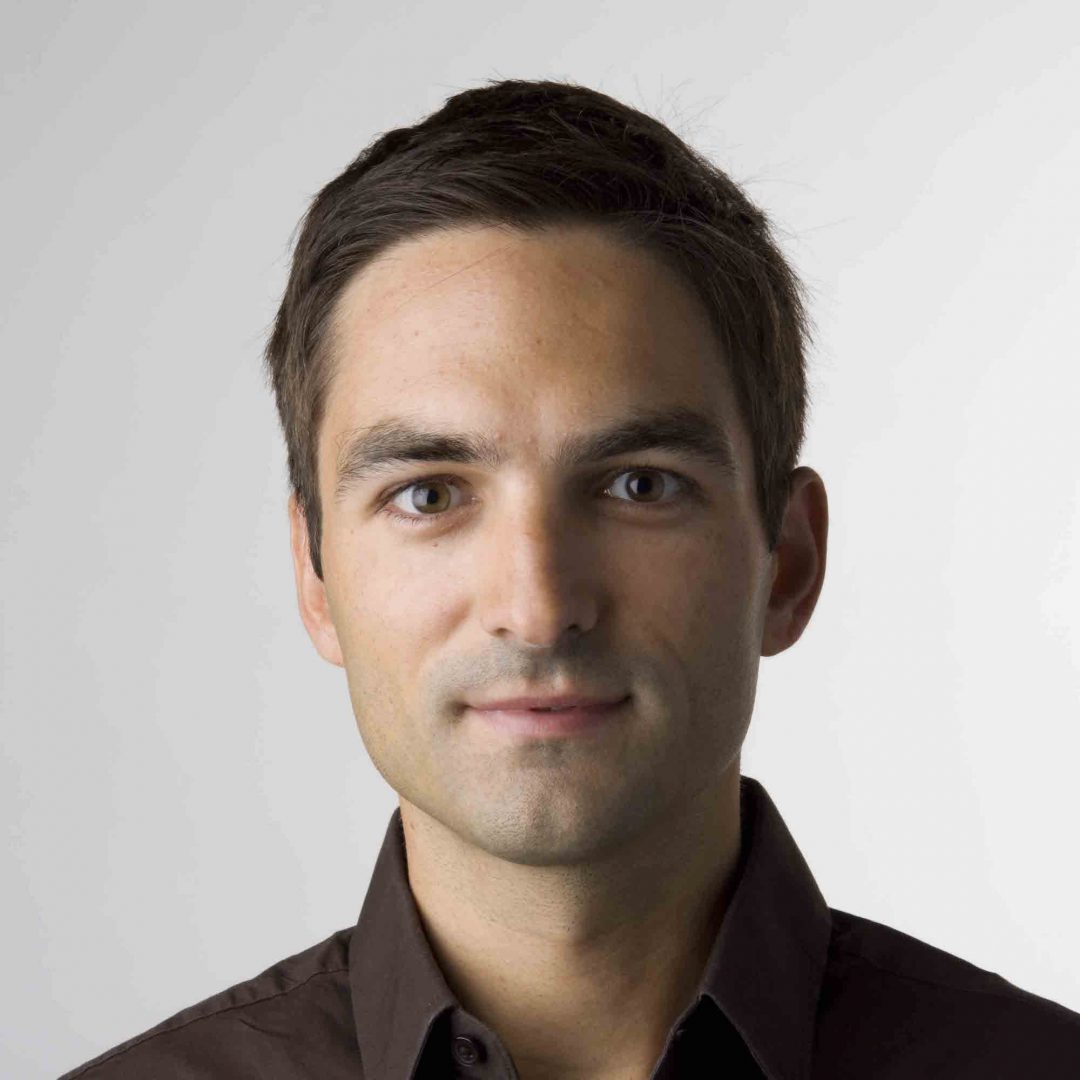
The job market will remain tight: “The world economy remains hot as the governments keep investing in infrastructure. This means there’s a lot of growth. And, technology remains the main driver of such growth. The demand for technical talent is growing with it.”
“Much of that talent will be subject to remote work. The pandemic forced us to move work online quickly but we haven’t quite yet figured out how to work remotely.”
“It’s helpful to think of remote work not as binary (remote or in-person) but rather as levels of such work. For example, L1 would be traditional office work, and L5 would be a company that was designed from the ground up to be remote-first. Covid forced L1->L2 transformation and a few companies have gone beyond just moving meetings to Zoom. Yet, there’s much more to do.”
Team Effectiveness will matter more and more: “A tight talent market and the new approach to teamwork will mean that effectiveness of teams is ever so important. “But what does that mean and how do you measure it in the knowledge economy? Productivity is easy to measure — it’s the output, i.e. the number of widgets we ship. Yet, we care about the outcome of all that busy work. This becomes harder to reason about — yet that’s the true effectiveness of the team.”
Maintaining team alignment at scale will still be tricky: “As technical orgs scale, the number of communication channels between team members grows quadratically. In other words, there are n-square ways to communicate for n being the number of teammates. This is why things are easy when we’re small yet quickly get out of control as teams scale.”
Natalie Smith, Associate Principal, Workplace Strategy, Perkins&Will London

“The appeal of the office no longer lies in simply having a desk and a chair to work at. Designers now have to go a step further to encourage people to get back to the office, providing experiences that cannot be matched at home.”
“We know from data gathered through our global surveys with Perkins&Will and our clients that part of why so many have been keen to get back to the office for at least a portion of the week is the social opportunities presented to learn from and collaborate with colleagues – particularly important when it comes to onboarding new staff. Capitalising on this will be key for the future.”
“Attracting people back to the office will have to mean integrating social spaces, particularly those that draw on leisure-based influences like hotels, into the workplace.”
“Within this, designing flexible spaces that encourage people from different teams or even companies to come together and share ideas, as popularised by co-working spaces, will be particularly important – an experience that is difficult to match online.”
“And as more and more people adopt a flexible working week, hybrid meetings will be here to stay in the long term. Workspaces will be increasingly designed to accommodate technologies that support the virtual calls that now form part of the fabric of everyday office life, promoting the inclusion of both employees in the office and those working remotely.”
“Rather than being left as an afterthought as they might have been just a few years ago, technologies like these will be front and centre of workspace design. This encompasses everything from dialling in colleagues and clients from around the world, to smart technologies that monitor building utilisation to understand hybrid occupancy patterns, or in an effort to maintain social distancing.”
For any questions, comments or features, please contact us directly.

Gabriela Hersham, Co-Founder & CEO of Huckletree

“There is a shift taking place in how the corporate world thinks about the office. Tenant experience has become a key metric in evaluating workplaces as employees have become more assertive. Increasingly, people want to avoid the negative experiences of working in an office, whether that be factors like commuting time or costs. Instead, there is a growing expectation for work to contribute positively to people’s lives. Covid-19 has further reinforced this because it has given many a sense of flexibility and choice that may not have existed pre-pandemic.”
“Companies need to think deeply about what their workspace offers to attract talent. There is a growing role for third-party operators, who have a proven record of success in this area – and that office spaces will likely become highly differentiated as a greater and greater number of services are offered.”
“For this reason, we will continue to see the growth of ‘sector hubs’, where multiple companies in the same industry share bespoke workspaces. This is an efficient way to offer large numbers of employees a tailored experience and creates an ecosystem whereby innovators are in constant contact with ideas and perspectives.”
“Sector hubs will grow in popularity for their ability to invigorate the creative process and embed employees in the bigger picture. Leaders will place less faith in the idea that businesses should ruthlessly compete. Instead, in sector hubs, companies can form communities that mentor and support each other and magnify their potential as a result.”
Chris Whife, Managing Director Global at Demand Science

“Many of us have experienced first-hand the benefits that data can bring to improve the way we live, work and collaborate with others. As we go in to 2022, we will see a greater emphasis on trust between data providers and marketing and sales professionals than ever before.”
“Until recently, organisations rushed to adopt digital technology to keep their business running. Now, business leaders have the opportunity to properly assess and choose a technology partner they can trust to provide them with the right information and the right insights. Self-guided digital interactions are exceeding person-to-person interactions in a buyer’s journey at the moment, but business decision-makers are already changing their buying behaviour.”
“Forrester predicts that 75% of efforts to create automated, personalised engagement will not meet ROI due to inadequate buyer insight. This means greater emphasis must be placed on relationships, and better data will be the Swiss army knife that helps marketers open new opportunities with greater opportunity for intelligent personalisation. It is also the gateway for accelerated growth. It enables B2B sales and marketing professionals to interact with an organisation in a more relevant, timely and meaningful way. The use of artificial intelligence enables businesses to better understand their customers’ unique needs and where they are in the buyer journey, and adapt the communications strategy in line with their changing circumstances.”
For any questions, comments or features, please contact us directly.

Miles Everson, CEO of MBO Partners
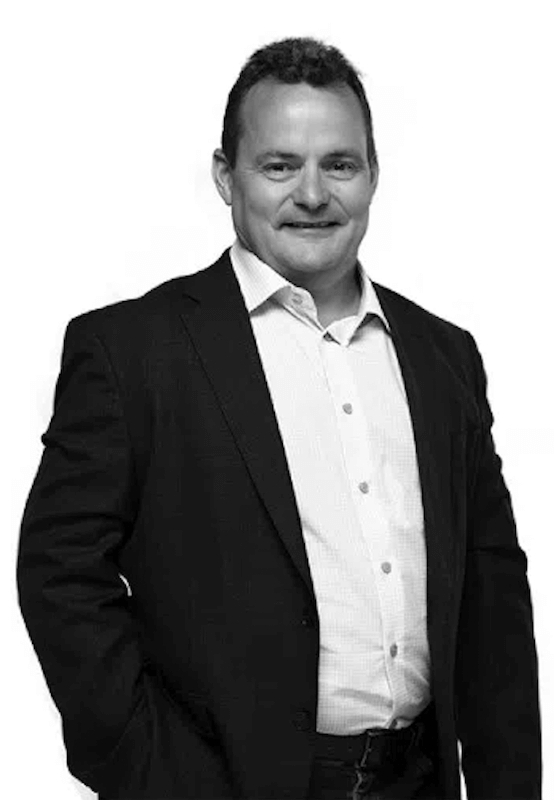
The Great Realisation is here, and here’s what it means for enterprises and talent alike: “At MBO Partners, we’ve been tracking the independent workforce for more than a decade as part of our State of Independence in America study (www.mbopartners.com/state-of-independence). By 2025, more than 50% of Americans will have worked independently during their careers.”
“Analysts may call this The Great Resignation, but I call it the Great Realisation.”
“If a person is good at what they do, the choice is theirs, both about where and with whom they work. For in-demand talent, most of whom say they are happier and healthier than in a traditional job, this may mean spacing between five or six clients, spreading the risk across a much larger spectrum than a single employer, and likely driving even more income as a result.”
“So, how can you possibly deal with this if you’re a corporation? You can’t ignore it. Every company in the world is already saying, “I don’t have enough of the right people.” And of course not. Nobody can get enough of the right people. It’s because you’re fishing in the wrong pond. Employers assume people want to be employees. But they don’t. They want to do what they love, how they want.”
“Savvy enterprises need not just accept that independence is here to stay but need to devise a cohesive and comprehensive workforce optimisation strategy to not just engage, but also to recruit and retain top independent talent. Those who don’t risk being left behind, not just in 2022, but in the years to come.”
Bjorn Reynolds, CEO of Safeguard Global

“Flexible” is the defining word for the future of work. An organisation’s people are the most valuable assets. Right now, the market is telling employers that we need to build the work experiences that people are seeking – and that requires going beyond a remote work option. At Safeguard Global, we know the future of work is evolving into Work in Any Way companies. This approach embraces the flexibility to adapt to the new when, where and how people want to work.”
“This people-centric, flexible approach provides employees with the work experience that fits their lifestyle. And for companies, especially start-ups, this makes accessing a global talent pool much easier – with work in any way, you can hire the best talent anywhere in the world, regardless of location.”
“Work in Any Way companies create work experiences by developing practices and policies that serve both the employer and employee needs. For example, offering differing pay cycles or payment in different currencies to better serves their employees’ needs; embracing asynchronous work; or hiring under different worker classifications depending on team or project needs.”
“2020 and 2021 proved traditional employment models weren’t the only way. Employees’ lives shifted dramatically and they experienced a different version of work / life “balance”- and found a better fit with work / life integration. As a result, it is clear that the traditional models of work need to change to avoid burnout and to ensure that workers ultimately feel fulfilled.”
“The future of work is rooted in the growth of worker influence – future workscapes will not be dictated solely by the organisation’s needs. And as a result, employers will better be able to recruit and retain the best talent by offering flexible work experiences.”
Mitch Chailland, President at Canal HR

“Work in 2022 will likely continue to value the things we’ve seen come to the forefront during the pandemic. Work-life balance, shifting talent, and employee wellbeing will all continue to pave the way for the modern workplace.”
“What that means for most employers is it’s more important than ever to listen to your employees and make changes, where you can that, will reflect the desires of your talent. The pandemic has been about adaptability, and businesses that take extra steps to support their employees are the ones that will begin to pull ahead from the competition.”
“To an extent, 2022 will be a year about control. Employees have a lot more control going into this year than they did two years ago. This means employers will have to be more in tune with their top talent on an individual level. That means understanding each employee’s needs in terms of benefits, projects, and office environment.”
For any questions, comments or features, please contact us directly.



